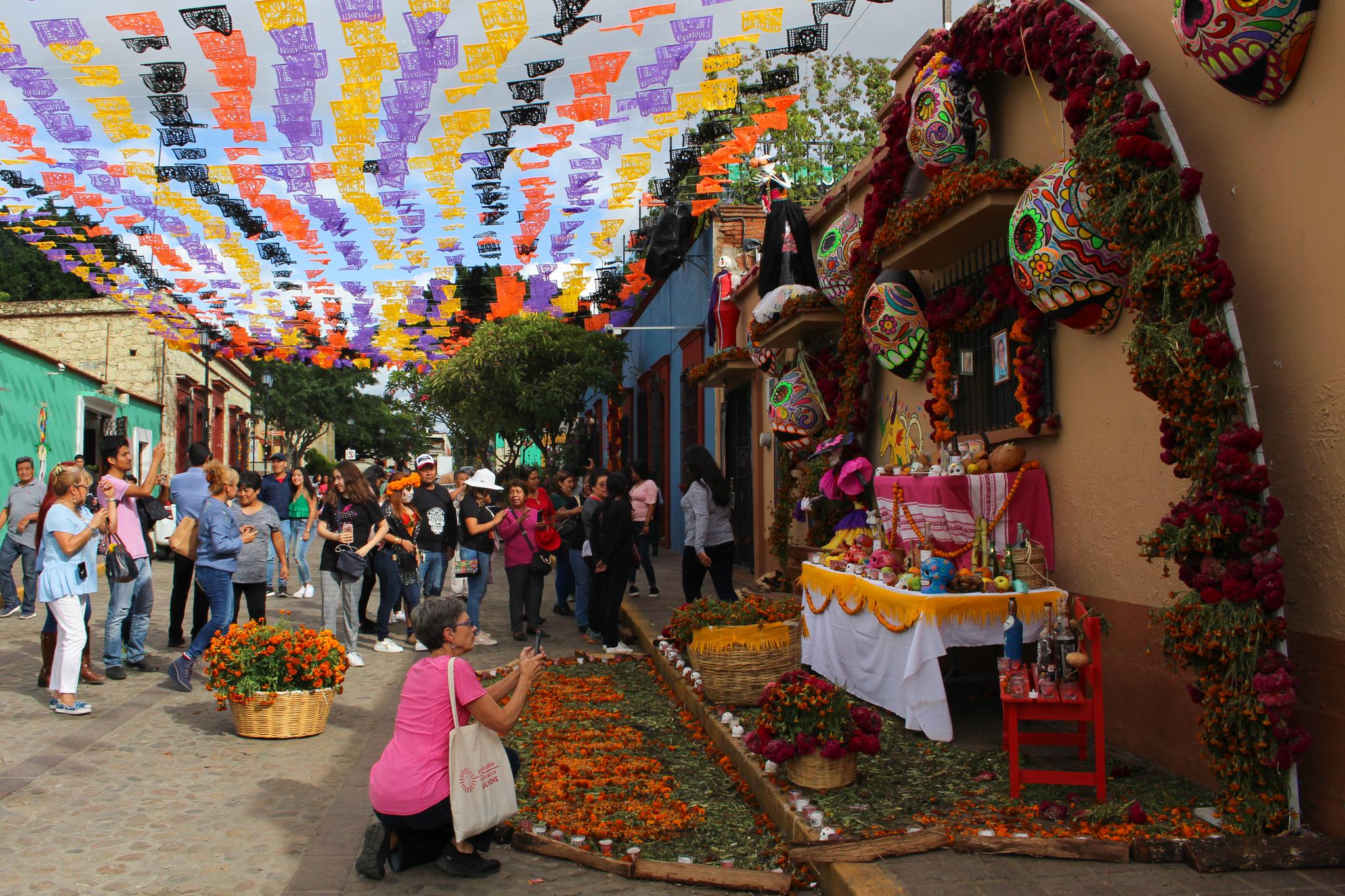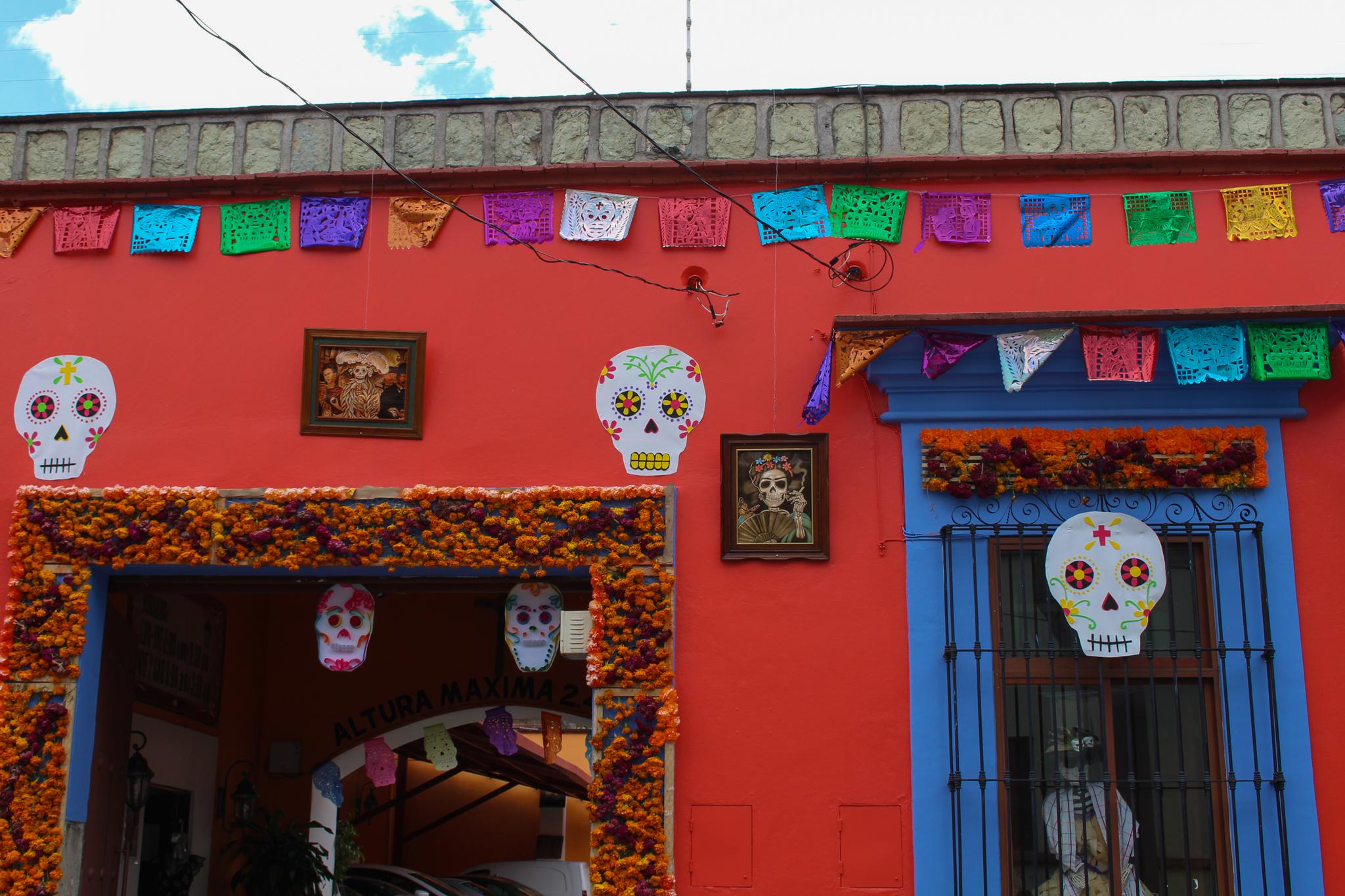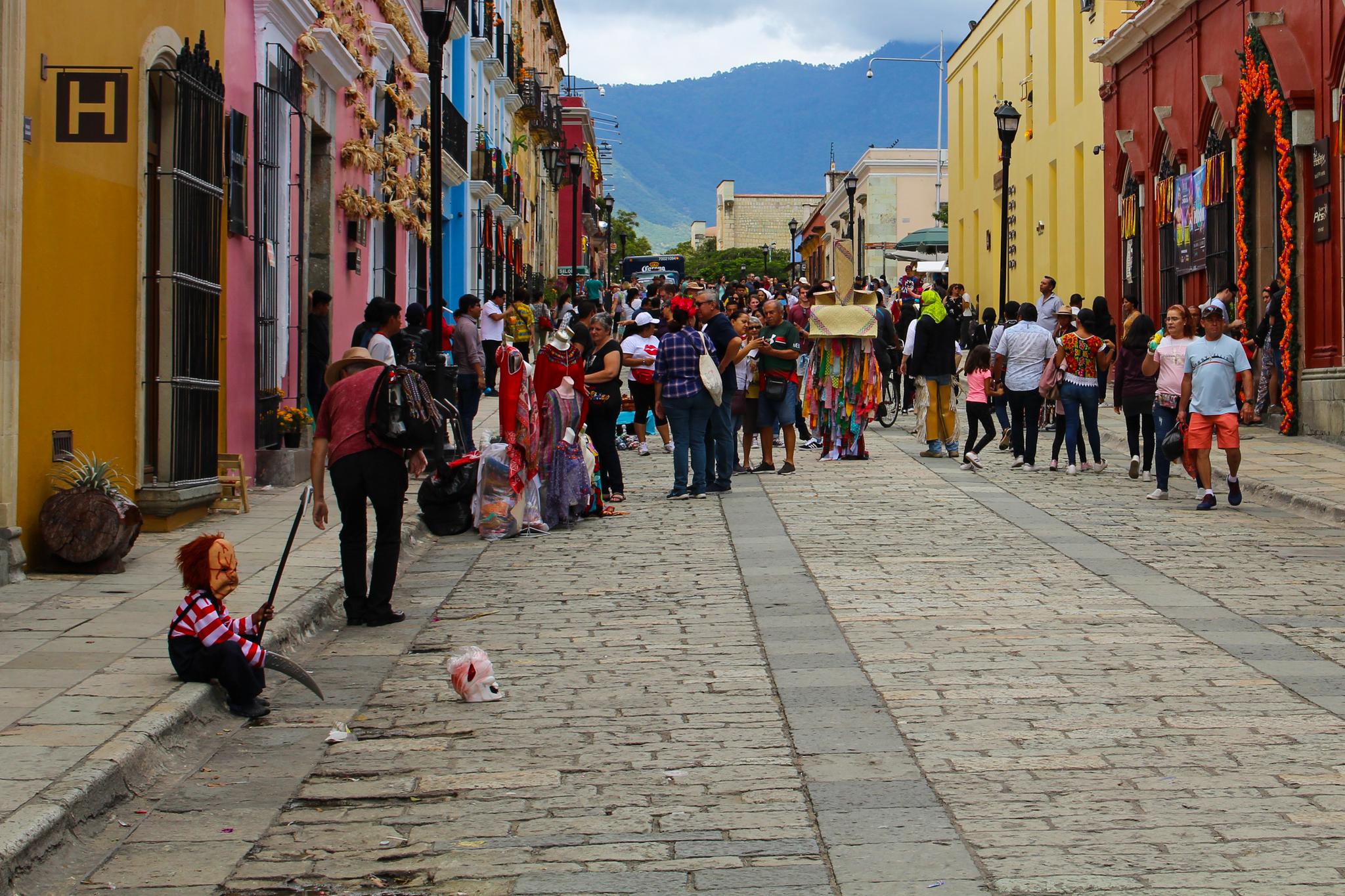On birthdays, Día de Muertos, and the privilege of being able to toggle between two countries
Hello again,
Last month, I finished my 22nd lap around the sun, which fell on the same day as the university Halloween party (you could say I threw myself a birthday party!). Julia and I spent weeks planning the event, a slightly stressful endeavor made 1000 times better by our truly amazing students, who burned the midnight oil to help us prepare.
The actual party was a chaotic but fun mix of bobbing for apples, a cake walk, a mystery box, pumpkin carving, a costume contest, food sales and decorations. For my birthday, my students surprised me with tamales, brownies, popcorn and a giant sugar cookie decorated with my bitmoji. My tutor, Yazmin, and a fellow teacher, Zena, took me out to lunch and surprised me with a cake, and my boyfriend, Ricardo, orchestrated a flower delivery. At the party, everyone sang “Las Mañanitas” to me (if you think it’s awkward to stand there smiling while everyone sings you happy birthday, Las Mañanitas — which has to be three times longer — is a whole different level!). I felt loved and exhausted and a little homesick, but mostly loved.
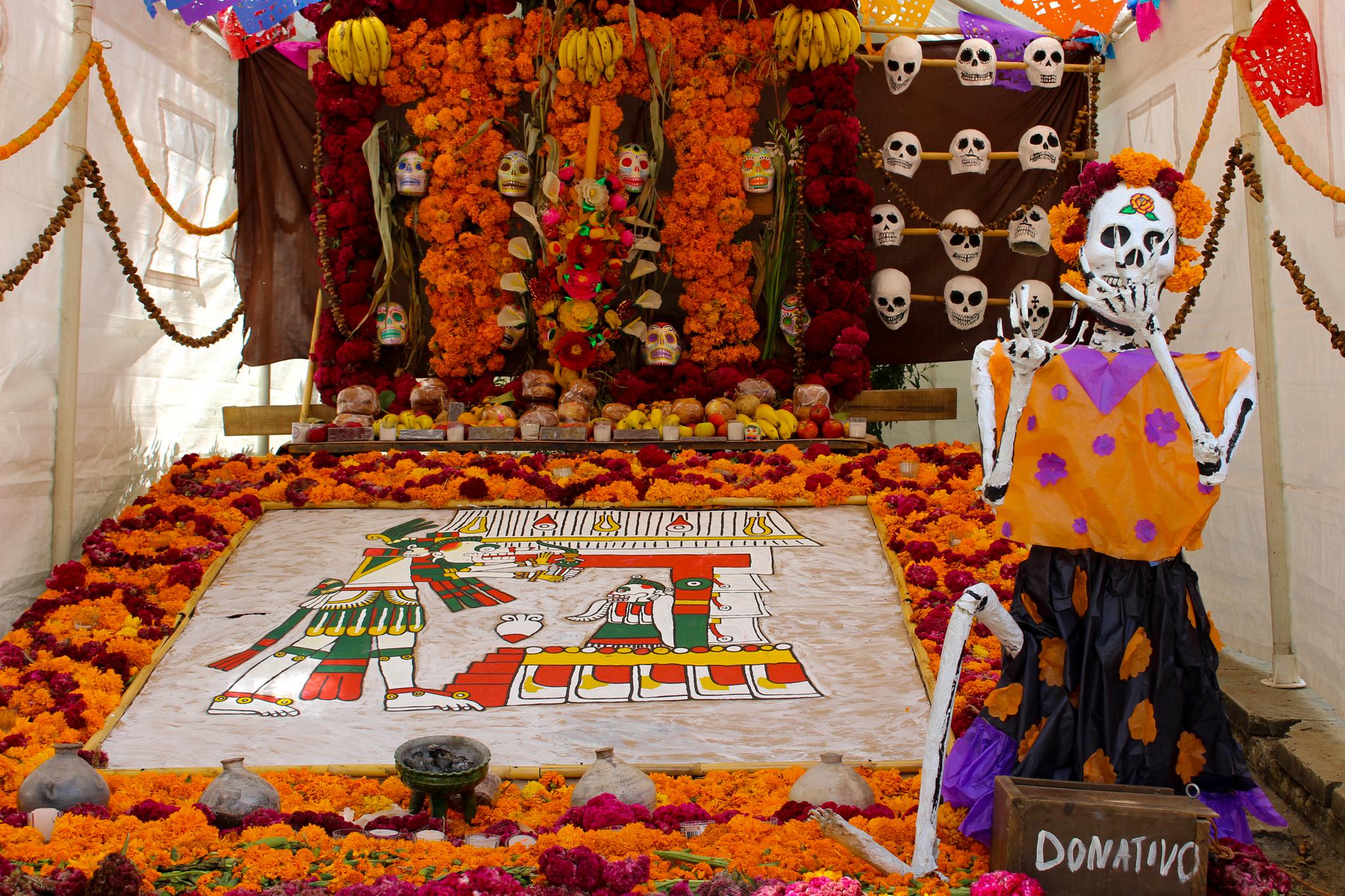
The night prior, a group of teachers took Julia and I to San Francisco de Campeche to see some of the Día de Muertos festivities. San Francisco de Campeche, the capital of the state of Campeche, is a beautiful city, with a walled historic center complete with fortifications that once protected residents from pirates. The highlight of our visit was watching a contest of young catrinas, who donned intricate makeup and costumes their families had spent weeks working on — inspired by monarch butterflies, saguaro cacti, and traditional dresses from the region.
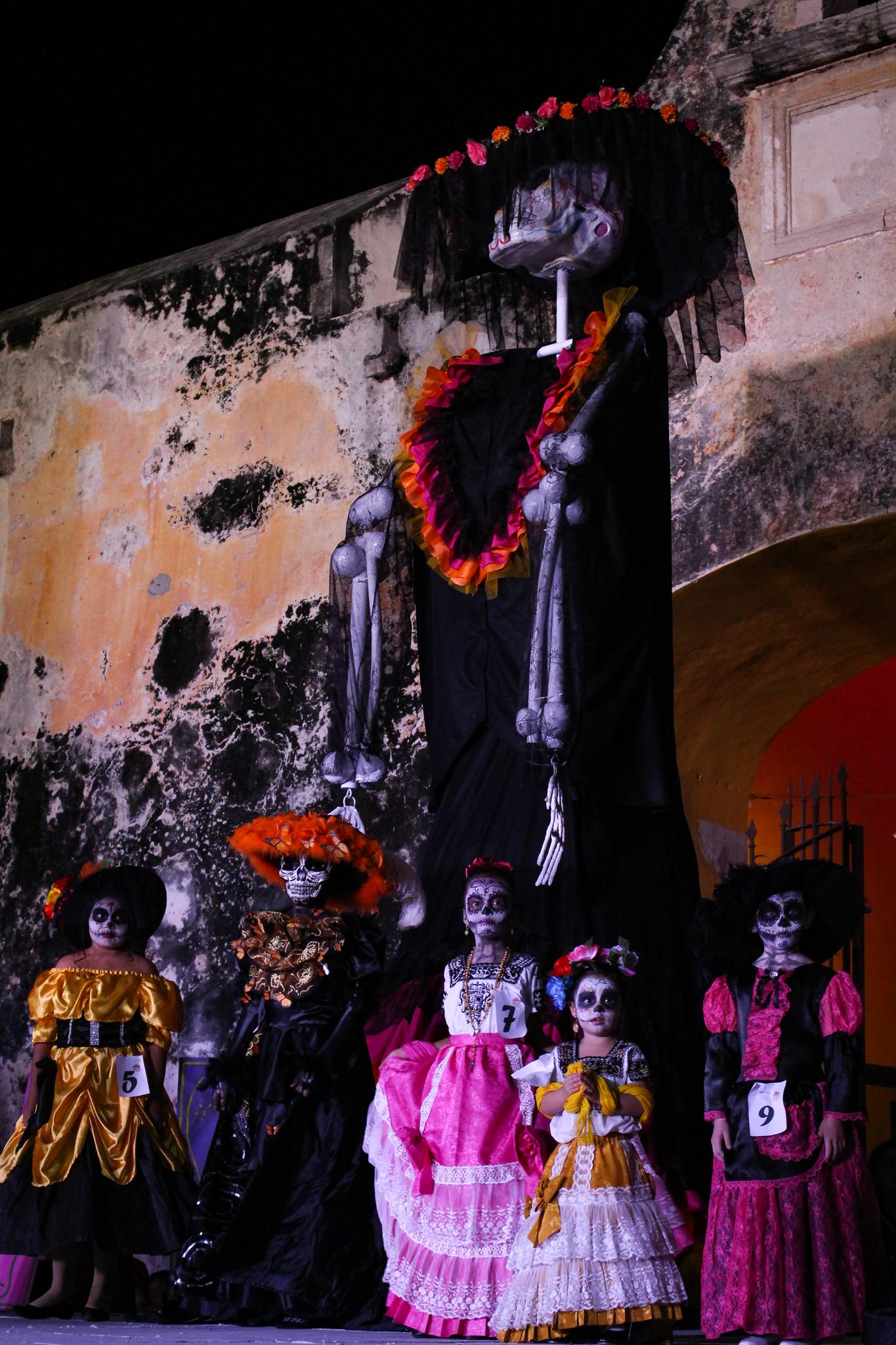
Over the weekend I went to Oaxaca, where the Día de Muertos festivities continued. Oaxaca’s streets — normally pulsing with color and activity — were a new level of vibrant this weekend. Doors were covered in cempasúchil flowers, altars filled restaurants, stores and street corners, and all hours of the day were packed with concerts, dances and open-air markets.
The city was full of tourists like me for the weekend, and as I walked through the city center I heard English, German and French more than I heard Spanish. This, in some ways, made me uncomfortable. Of course, there were many events meant for tourists like us, spaces specifically created to share culture — but Día de Muertos is also a very personal and deeply significant holiday, one that I feel I can appreciate, but which is not truly mine to celebrate.
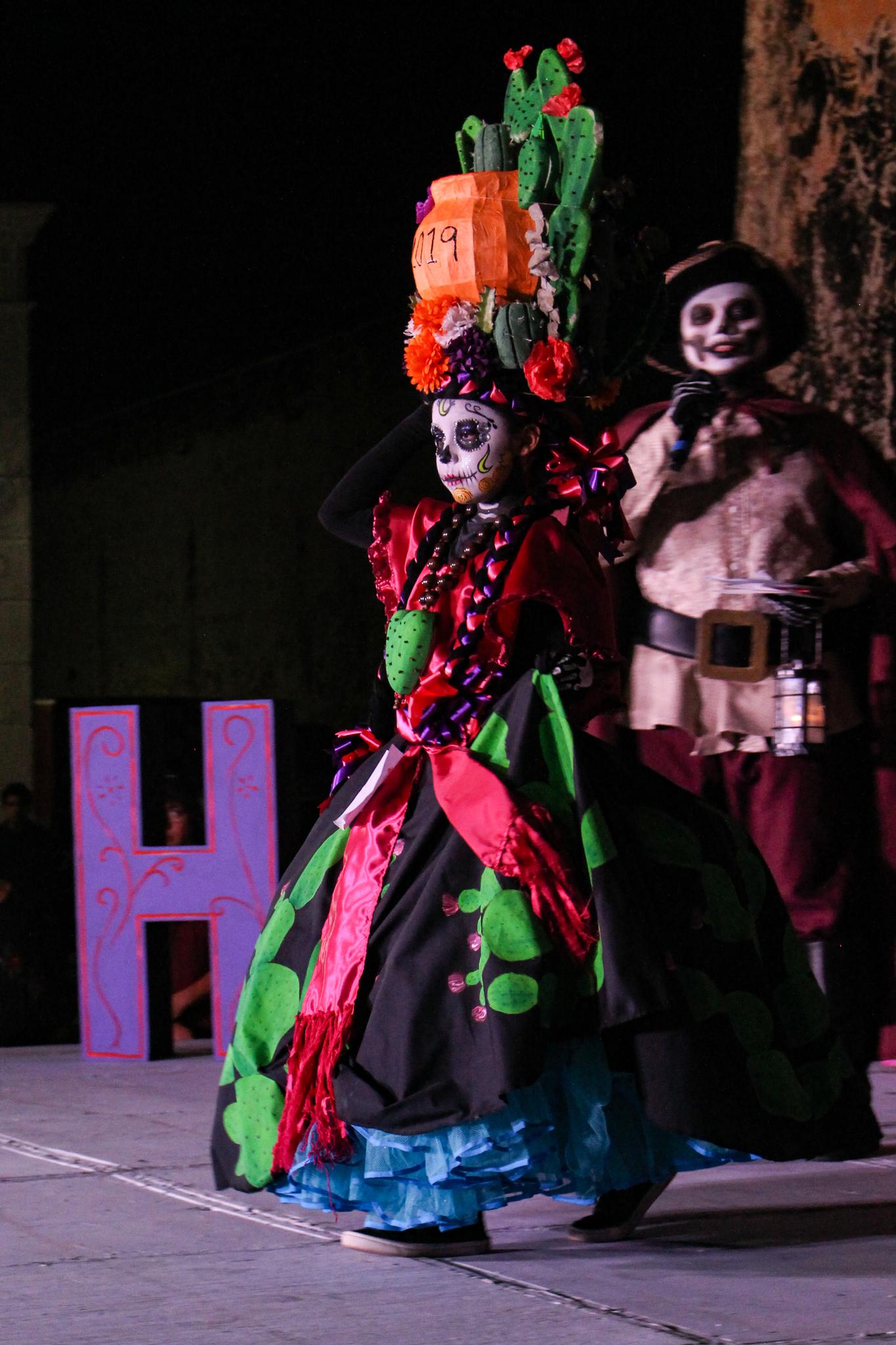
I’ve been thinking a lot about the idea of cultural consumerism the past couple of months in Mexico, a country I believe to be the most culturally rich in the world. It’s so easy to visit amazing places, take pretty photos, spend money on restaurants and hostels, and then leave, having skimmed the surface of a place, taken what you’ve wanted from it, while paying little attention to what and whom you leave behind. Engaging with places and people in an authentic way is more complex, and it also requires understanding which spaces are not for you — not for you ever, or simply not for you yet. I say this not to be preachy, but rather because it’s something I’m trying to hold myself accountable to.
The idea of cultural consumerism goes hand-in-hand, I think, with the fact that I, for the most part, get to enjoy all the best parts of living in Mexico — without also having to live through some of the more difficult parts. I receive a reasonably generous grant to cover my living costs, which I can be fairly confident will arrive on time every couple of months. Thanks to that and some savings I have from working during college, I can pay for bus tickets to travel every few weekends, checking some of the most beautiful parts of the country off the list of places I want to visit. When I need to go somewhere at night or off the route of public transportation, I can call a taxi. I walk around with the confidence of knowing that if I get robbed, I could probably replace all the things I carry in my bag. If I get sick, I have private health insurance. And though I experienced sexual violence on the Mexico City metro two years ago, my experience was nothing compared to the sexual and gender-based violence many Mexican women face each day, for which justice (assuming the idea of “justice” is even possible after surviving such violence) is often a distant illusion. When the 2017 earthquake happened in Mexico City, I was given the option to go home — and I am confident that if anything really bad happened to me here, I would be given the same option.
This is the profoundly unfair part of what I’m experiencing right now, this ability to toggle between the best parts of two countries. Everyday I read stories of people crossing through the country I’m currently in — Mexico — en route to the country I’ve temporarily left behind —the U.S. — whose quest is not about self discovery, cultural immersion, or professional development, but rather is about the basic human needs of food and safety.
When I’ve brought this up to a few people, they’ve told me the important thing is to acknowledge one’s privilege. But I worry that comes up short. What good does acknowledging privilege do if doing so still allows injustice to persist? I don’t know that me writing and sharing these thoughts does any good either, but it’s what I know how to do.
This post took a bit of a turn, but it’s because there are a lot of beautiful things in the world and also a lot of ugly ones. I — like most of us, I think — am trying to learn how to navigate them both. I’m not very good at it yet, but here’s to getting better.
Hugs,
Mia
